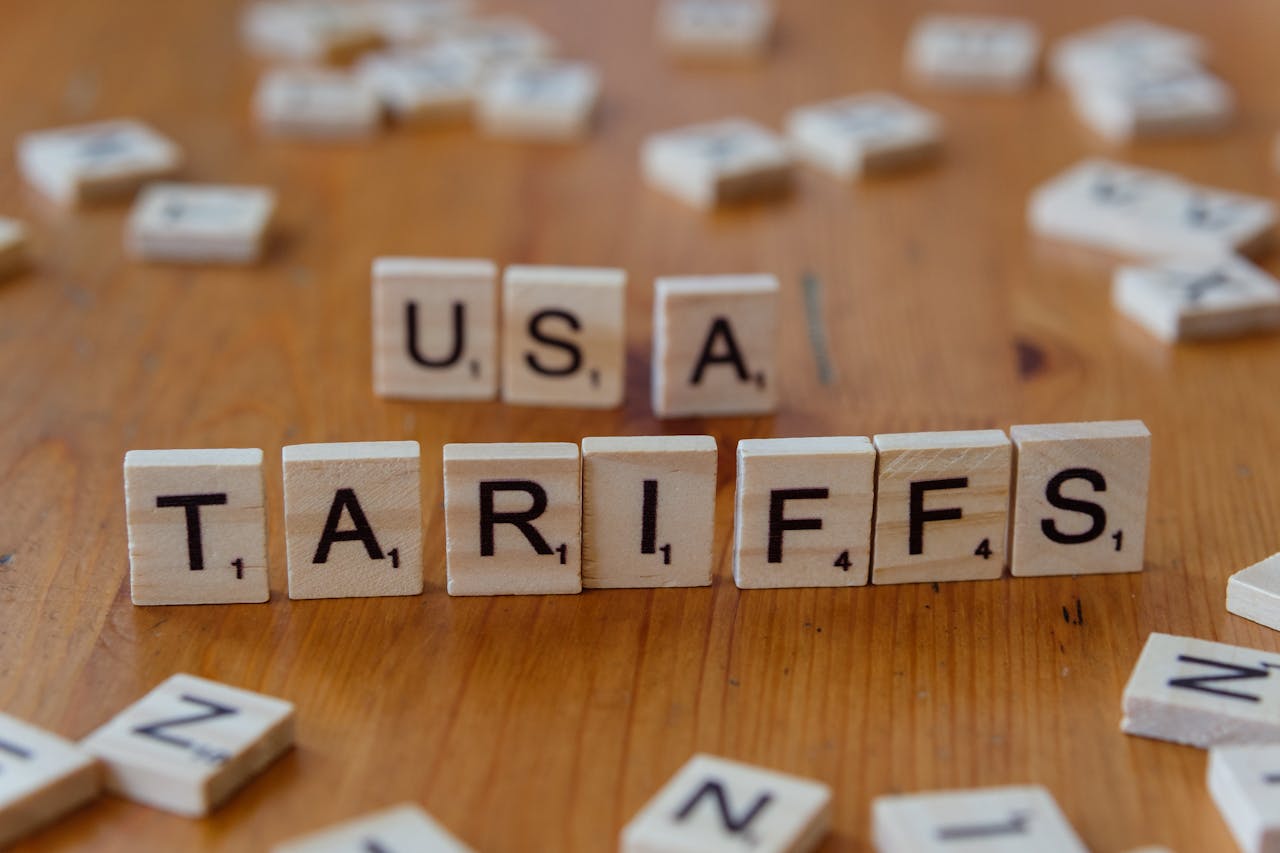In 2025, the U.S. government introduced a series of “Liberation Day” tariff measures, pushing the average tax rate above 10%, with some trade partners facing tariffs as high as 50% on steel and aluminum. The underlying trade logic and impacts go far beyond the simple idea of “protecting domestic industries.” Let’s break it down layer by layer—from global to domestic impacts—highlighting all the crucial disruptions.
I. Global Impact: Slower Growth, Higher Inflation, Supply Chain Disruptions
🧭 Global Economic Growth Slows Further
- The OECD downgraded global GDP growth for 2025 from 3.3% to 2.9%, citing that U.S. tariffs will “suppress global activity, income, and tax revenues.”
- The IMF also cut its forecast to 2.8%, warning that U.S. tariffs “significantly reduce trade growth and pose major downside risks.”
🛒 Consumers Pay More, Buy Less
- With tariffs on steel and other raw materials, U.S. canned food prices rose by 9–15%, with per-can costs increasing by 18–30 cents.
- Deloitte noted that CPI inflation expectations rose in April, indicating emerging inflationary pressures.
- A Reddit post by a food business owner revealed that this further squeezes middle- and low-income households, weakening domestic consumption.
🔗 Supply Chains Struggle: Rising Costs, Plant Relocation, Investment Stagnation
- After the “Liberation Day” tariffs, nearly 30% of manufacturers in the U.S. reported layoffs or halted hiring, with production plans forced to shift.
- A Medium study found that auto parts costs rose by $2,000–$12,000 per vehicle, and global supply chains began shifting toward near-shoring and friend-shoring strategies.
📉 Markets React: Volatility Surges, Defensive Sectors Favored
- U.S. steel, auto, and shipping stocks declined across the board.
- Canada’s and Mexico’s GDPs are projected to fall by 1.3% and 0.7%, respectively, with Canadian inflation also ticking up.
- Germany and Australia experienced “black swan” flash crashes in stock markets, with hundreds of billions in market value evaporating.
II. Domestic Impact: Industry Revival vs. Consumer Wallet Strain
🏭 Did Manufacturing and Energy Sectors Benefit?
The U.S. government claimed the tariffs protect steel, aluminum, and domestic manufacturing. Analysts argue that while these sectors gain short-term relief, the long-term effects of global retaliation and cost increases will offset any gains. Notably, steel and aluminum are just midstream industries—downstream sectors like autos and appliances may not see substantial growth.
💵 U.S. Households Bear the Burden
- The Tax Foundation estimated that tariffs cost American households $830–$1,145 more per year.
- Clothing prices rose by up to 33%, and food costs saw a 4.5% increase—especially hurting middle- and lower-income families.
🏦 Business Confidence Drops
- Nearly 30% of U.S. CFOs plan to cut back on hiring or investment due to rising uncertainty.
- Deloitte emphasized that policy unpredictability has become a major barrier to household and business spending.
📈 Inflation Rebounds, Rate Cuts May Be Delayed
- The OECD predicts U.S. CPI could reach 2.8% in 2025 due to tariff-driven inflation.
- Deloitte warned that these inflationary pressures may force the Federal Reserve to delay expected rate cuts.
III. Global Order Disrupted: Trade Rules and Ally Responses Split
🌍 Multilateral Rules Under Pressure
- Germany strongly condemned the tariffs as an “attack” on the global trade order, while Australia warned that “no economy is safe.”
- The G7 and EU began drafting response plans, showing signs of rising fragmentation.
🇨🇳 Tensions with China Escalate
- China retaliated with 34% tariffs and export restrictions on rare earths and tech goods.
- The rift between the two powers could reshape bilateral trade and supply chain strategies for years to come.
IV. Policy Responses: Recommendations for the U.S. and the World
| Area | U.S. Strategies | Global & Domestic Countermeasures |
|---|---|---|
| Manufacturing | Short-term support for some sectors | Diversify supply chains, industry alliances |
| Household Cost | Monitor food, autos, appliances | Provide subsidies or tax relief |
| Business Outlook | Federal aid, investment rechanneling | Accelerate clear policy communication |
| Trade Framework | Restart multilateral negotiations | Reinforce WTO or bilateral mechanisms |
| Monetary Policy | Inflation targeting, cautious easing | Coordinate inflation control & stimulus |
Summary
The U.S.’s aggressive tariff hikes on imported goods have, in part, supported certain domestic industries and given temporary breathing space to select manufacturers. But this approach has simultaneously pushed costs onto consumers, disrupted global supply chains, and dampened investor confidence—risks that ripple through global markets and the domestic economy alike.
A shift from unilateral protectionism to coordinated bilateral strategies could help transform these policy risks into strategic realignments. If not, the long-term consequences of tariff-based economic isolation could outweigh any short-term industrial gains.
FAQ: U.S. Tariffs and Their 2025 Impact
1. What are the new U.S. tariffs introduced in 2025?
In 2025, the U.S. implemented a wave of “Liberation Day” tariffs targeting countries like China, Mexico, and the EU. Tariff rates range from 10% to 50%, especially on steel, aluminum, and electric vehicles.
2. Who pays the cost of U.S. tariffs—foreign companies or American consumers?
While tariffs are imposed on imports, the cost is typically passed on to U.S. consumers in the form of higher prices for goods such as electronics, cars, clothing, and canned food.
3. How do these tariffs affect global trade?
They slow global GDP growth, raise trade tensions, and disrupt international supply chains. Countries like Canada, Germany, and Australia have reported economic spillover effects due to U.S. protectionism.
4. Do tariffs help revive American manufacturing?
Only partially. While steel and aluminum producers may benefit, downstream industries like auto manufacturing face rising input costs, potentially leading to job cuts or production offshoring.
5. Will U.S. tariffs make inflation worse in 2025?
Yes. According to OECD and Deloitte, tariffs contribute to cost-push inflation, increasing prices for everyday goods and possibly delaying Fed interest rate cuts.
6. How are other countries responding to U.S. tariffs?
China has retaliated with its own tariffs and rare earth export restrictions. The EU and G7 are exploring joint responses, while WTO dispute cases are increasing.
7. What should American households expect in daily life?
Expect higher prices on groceries, clothes, and home goods, plus a potential slowdown in job growth if business confidence falls.
8. Are there any alternatives to tariffs?
Yes. Experts suggest policies like tax incentives for reshoring, investment in domestic infrastructure, or coordinated trade agreements may be more effective and less disruptive.



